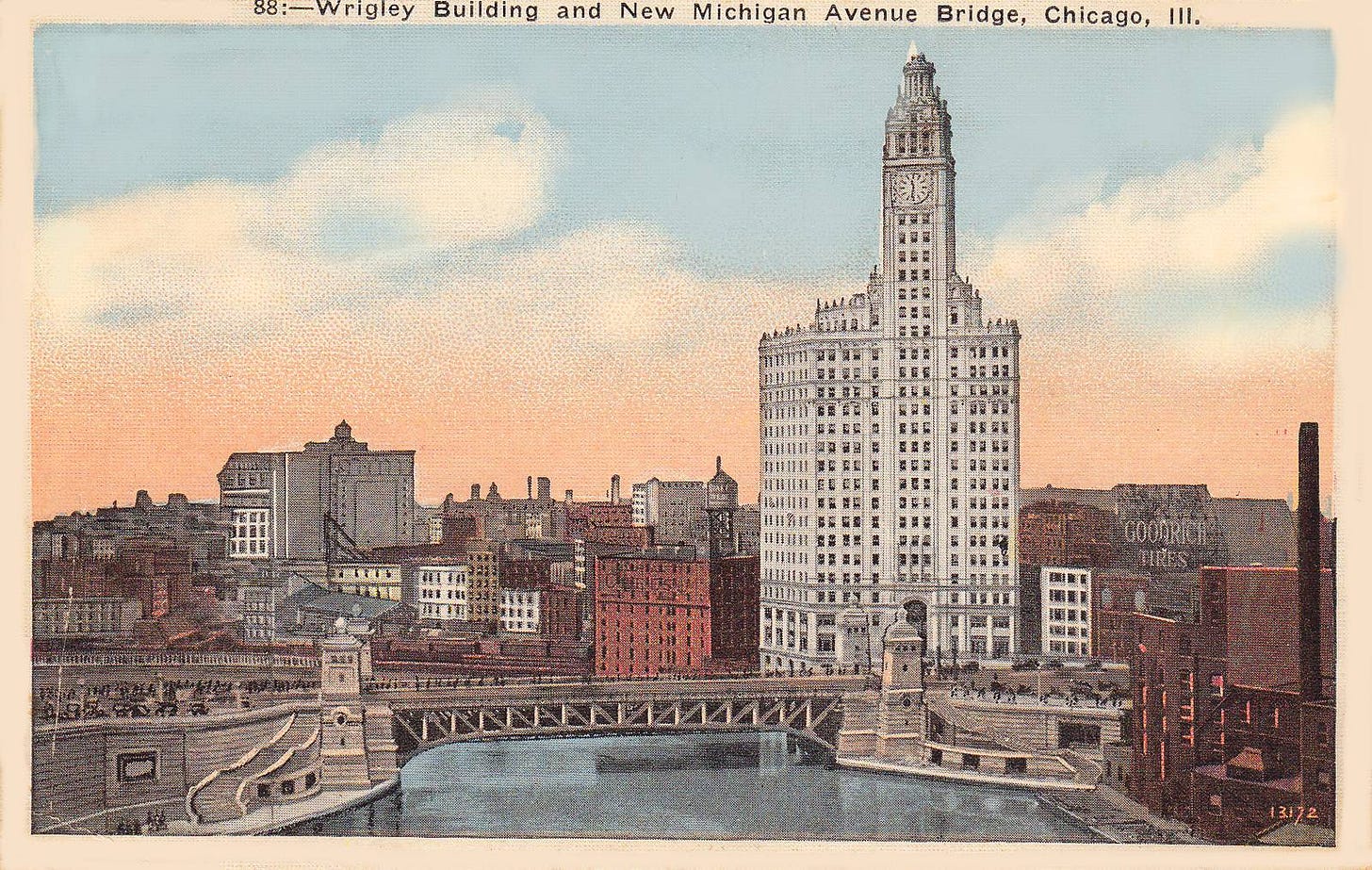On May 21, 1941, Memphis Minnie Douglas and her boyfriend, Ernest “Little Son Joe” Lawlars, arrived at the Wrigley Building at 400-410 North Michigan Avenue in Chicago. Built in 1920, this sumptuous skyscraper housed WBBM radio, an affiliate of the Columbia Broadcasting System. In recent months, a parade of artists signed to Columbia and its OKeh subsidiary had recorded in the station’s studio facilities – the Carter Family, Roy Acuff, Big Bill Broonzy, Brownie McGhee, Curtis Jones, Merline Johnson, Roosevelt Sykes, Gene Krupa, Teddy Wilson, Cab Calloway, and Count Basie among them. As they stepped into the air-conditioned lobby on that hot, sunny day, Memphis Minnie and Little Son Joe likely carried with them at least three guitars. The only musicians scheduled to record that day, they’d worked out the arrangements for eight songs. One of these, Me and My Chauffeur Blues, was destined to become Memphis Minnie’s biggest hit.
At the time, Memphis Minnie was already one of the era’s most prolific recording artists, having made more than 230 recordings under her own name and about 50 more in collaboration with Wilbur “Kansas Joe” McCoy. She’d also appeared on releases credited to Amos Easton and the Memphis Jug Band. Born Lizzie Douglas circa June 1897, she sometimes claimed that her birthplace was Algiers, Louisiana, but census and Social Security records all cite Mississippi. She spent her earliest years in rural east-central Tunica County, Mississippi, where she was known to family and friends as “Kid.” In a 1939 interview with Onah Spencer for the Illinois Writers’ Project, she reported that at age seven she began learning to play “on a cigar box strung with thread.” By 1910, census records confirm, the family had moved close to the tiny Tunica County settlement of Hollywood, some 22 miles south of Memphis. In her teens, Minnie played for tips in Memphis, where people knew her as “Kid Douglas.” To cut above the din in Church’s Park and the Beale Street shops and barrelhouses she frequented, she and McCoy began playing steel-bodied National resonator guitars, which projected better than traditional acoustic guitars.
In 1929 a Columbia talent scout heard them playing for tips in a Beale Street barbershop and convinced them to go to New York City. There, reported Mike Leadbitter, “a man with the company dubbed them Kansas Joe and Memphis Minnie.” Their very first session, on June 18, 1929, yielded seven issued sides, notably When the Levee Breaks, sung by Kansas Joe, and Minnie’s sexually suggestive Bumble Bee Blues.
Memphis Minnie's "Bumble Bee Blues"
Jim O’Neal’s research reveals that on the day of their first session in Memphis, February 20, 1930, “They were married in Memphis under the names Kansas Joe McCoy and Minnie Douglas. They recorded more sessions in Memphis and were there for the 1930 census, but by June 5, 1930, they began recording only in Chicago and probably moved there around that time.” During the early 1930s they continued to record as a duo, producing records that came out on Vocalion, Victor, Bluebird, Banner, Oriole, Melotone, and Perfect. After their September 1934 Decca sessions they never recorded together again, which suggests that their separation may have occurred around this time. Minnie continued on her own, working clubs and recording with various sidemen. By 1939 she was performing with Little Son Joe.
It took considerable courage for a female artist to survive the Windy City’s male-dominated blues scene, especially the raucous taverns and clubs where the blues were played. But the hard-drinking, snuff-dipping, tobacco-spitting Minnie was well-suited for the task. With her rough-edge vocals, downhome arrangements, and relatable lyrics, her music was completely in tune with her audience, many of whom were transplanted Southerners. Offstage, she loved to shoot craps and play cards with the guys, and, to borrow a phrase from Mark Twain, she could swear wonderfully. When angered, she was a force to be reckoned with. As Johnny Shines described in Mike Rowe’s Chicago Breakdown, “Any men fool with her, she’d go for them right away. She didn’t take no foolishness off them. Guitar, pocket-knife, pistol, anything she get her hand on, she’d use it. Y’know, Memphis Minnie used to be a hell-cat. Her and Son Joe and Roosevelt Sykes used to work together . . . boy! They’d have some of the terriblest rows, but Memphis Minnie be the winner every time – she’s have it her way or else! When I knew her in Chicago, she was drinking a lot of gin.”
Keep reading with a 7-day free trial
Subscribe to Talking Guitar ★ Jas Obrecht's Music Magazine to keep reading this post and get 7 days of free access to the full post archives.




